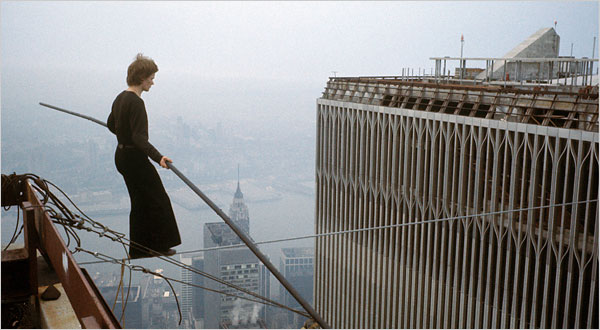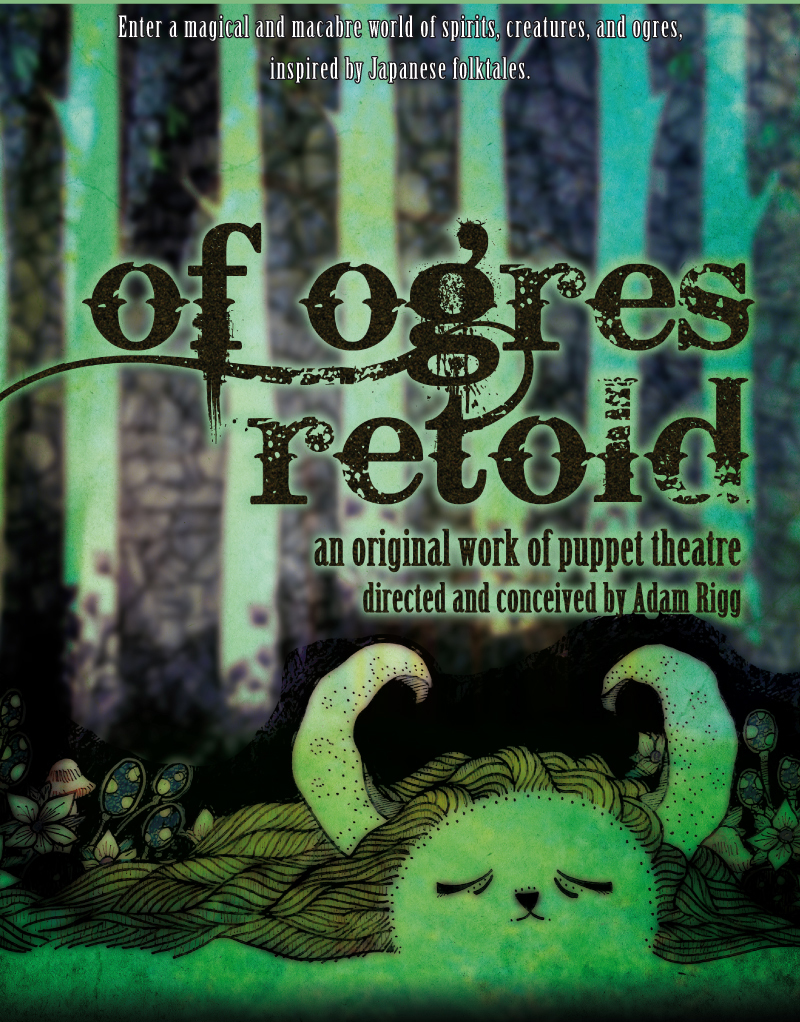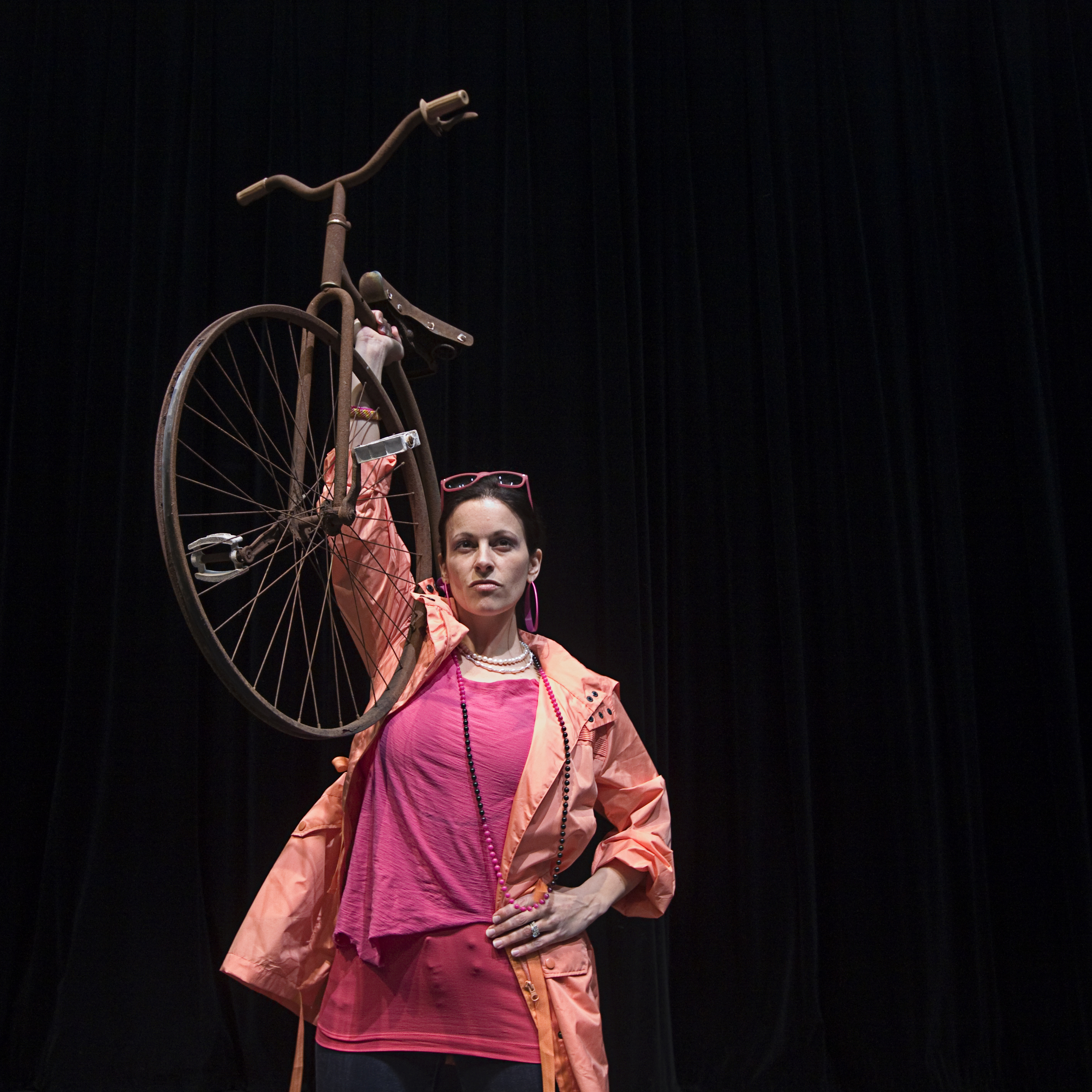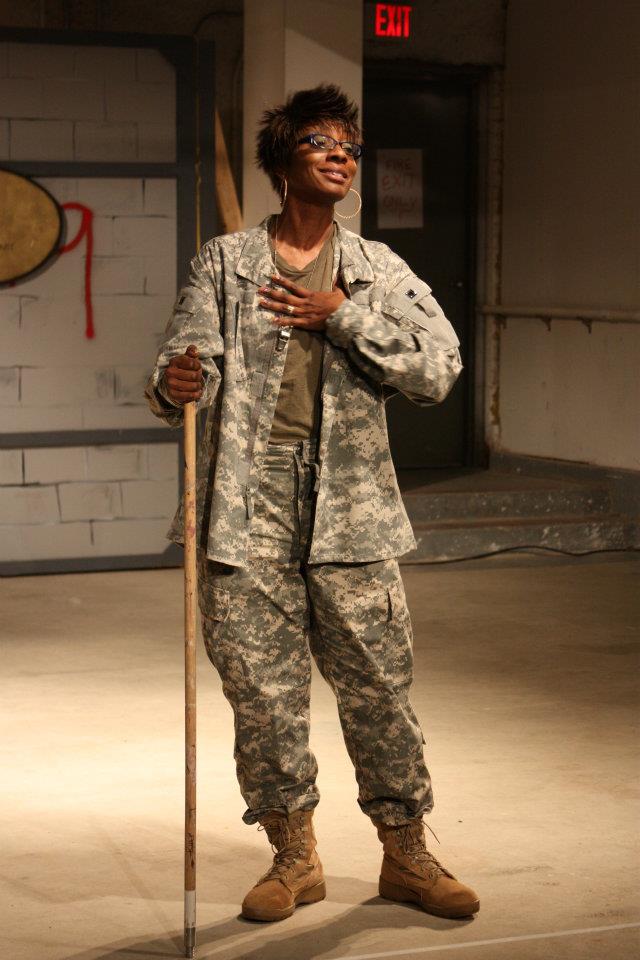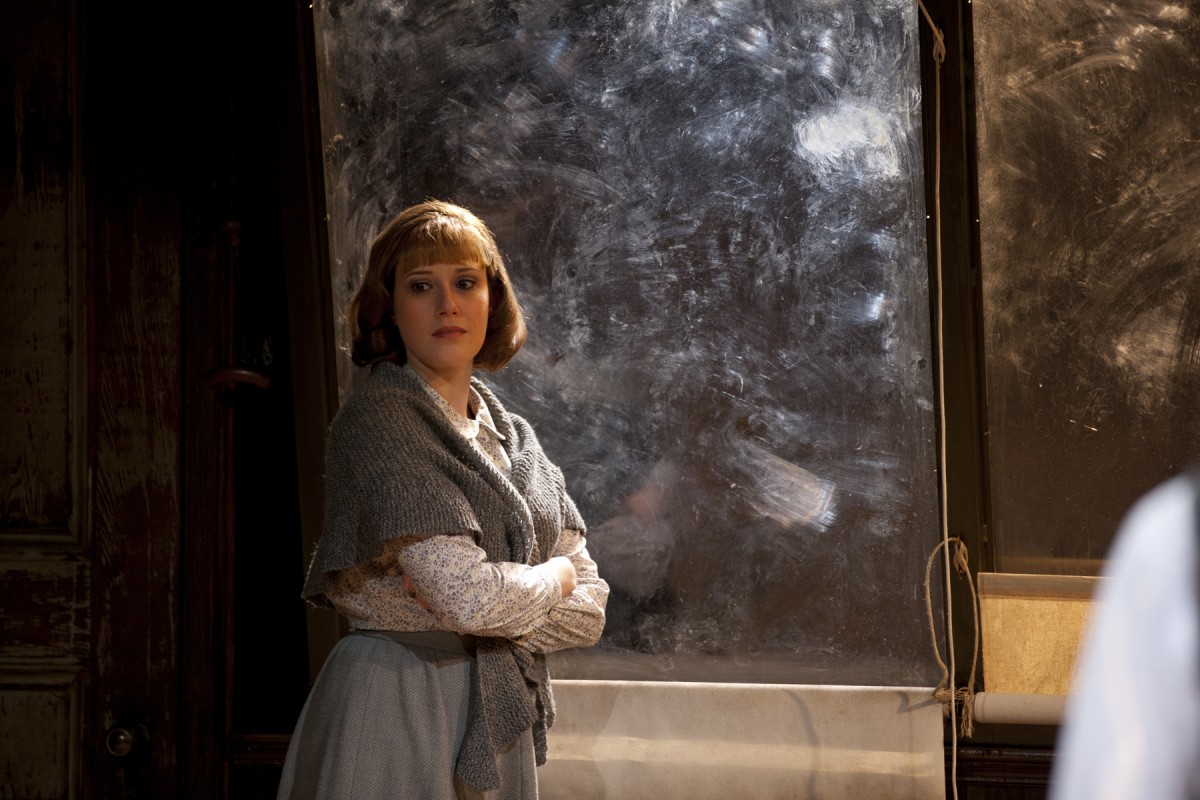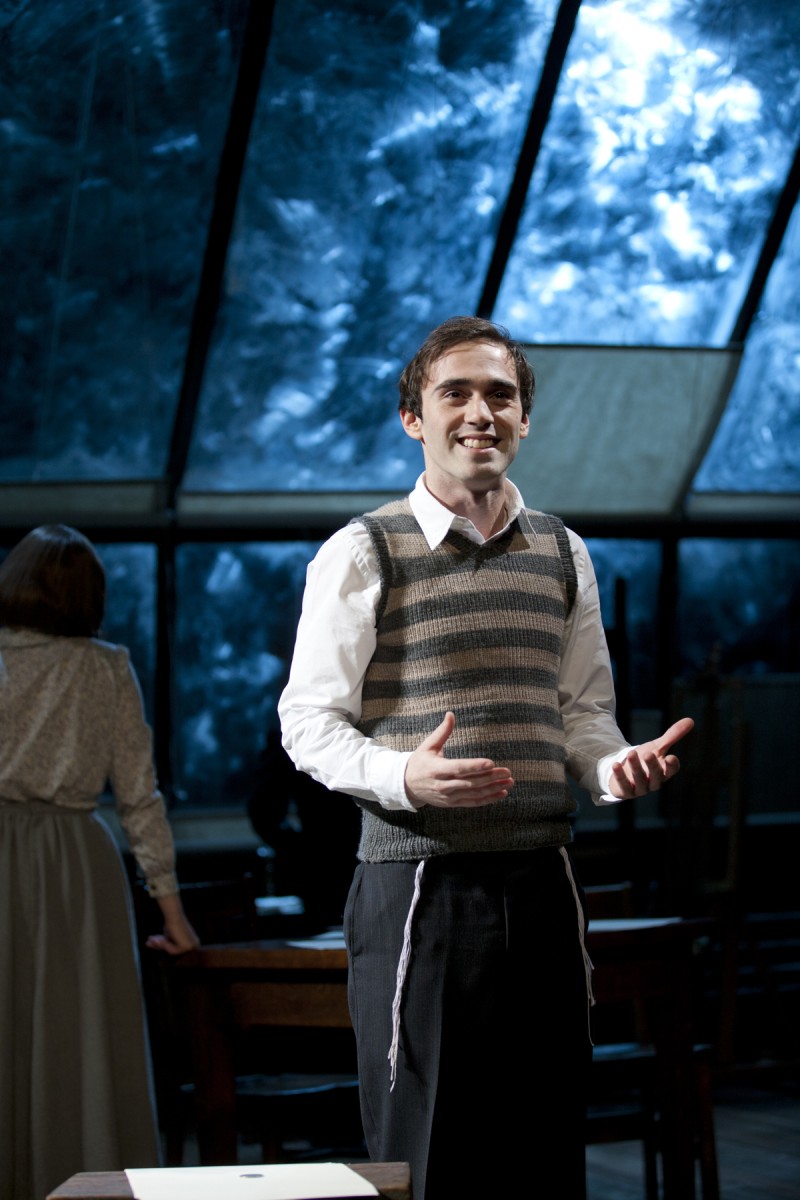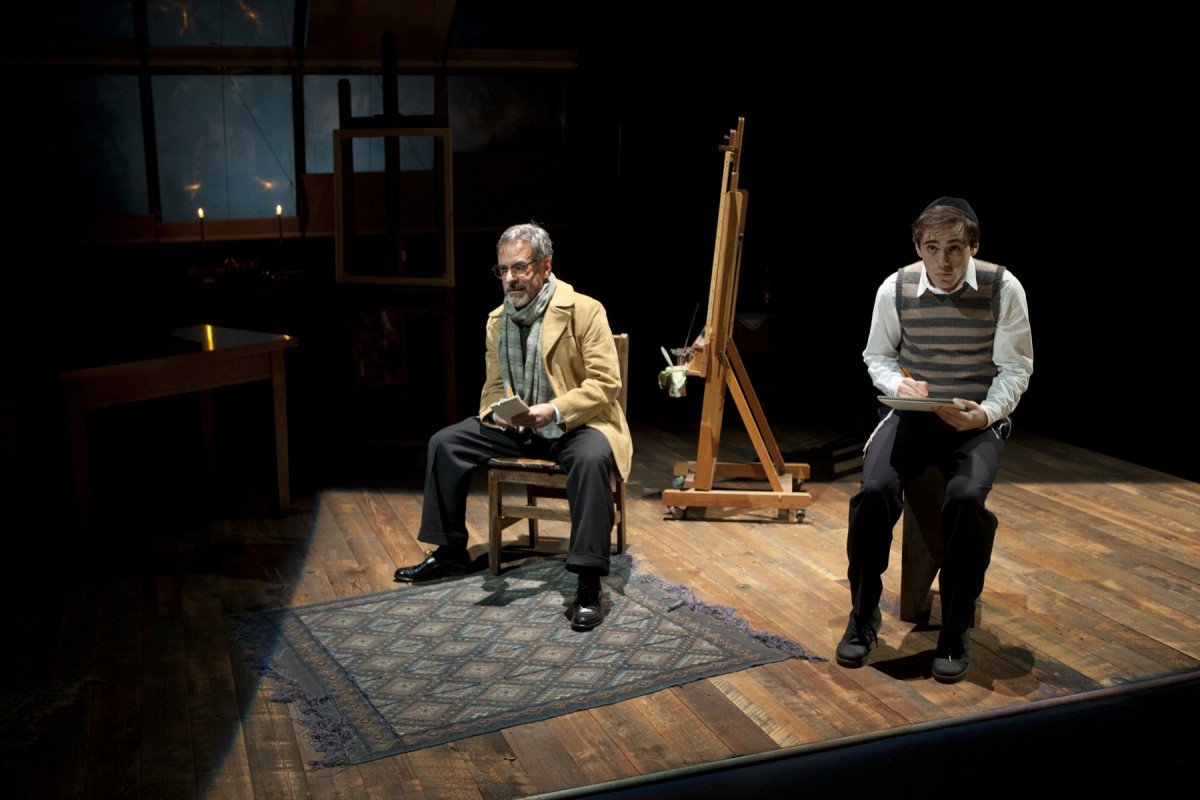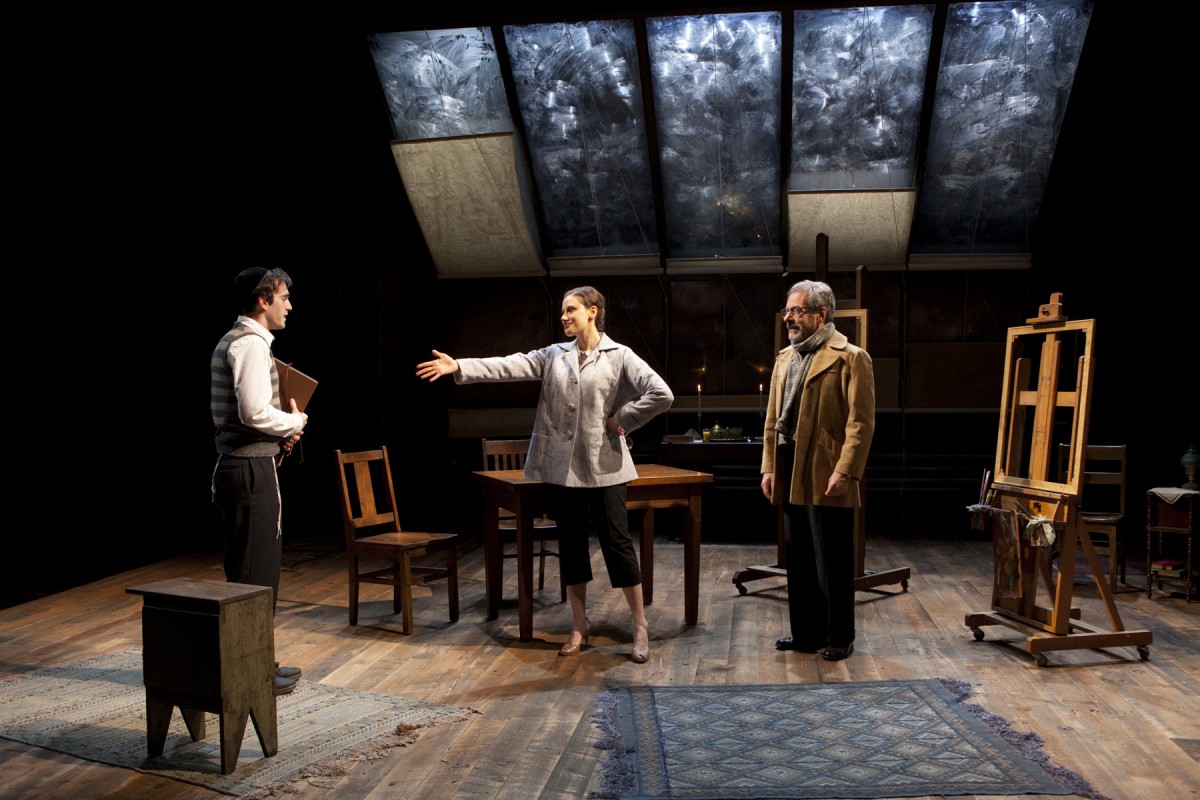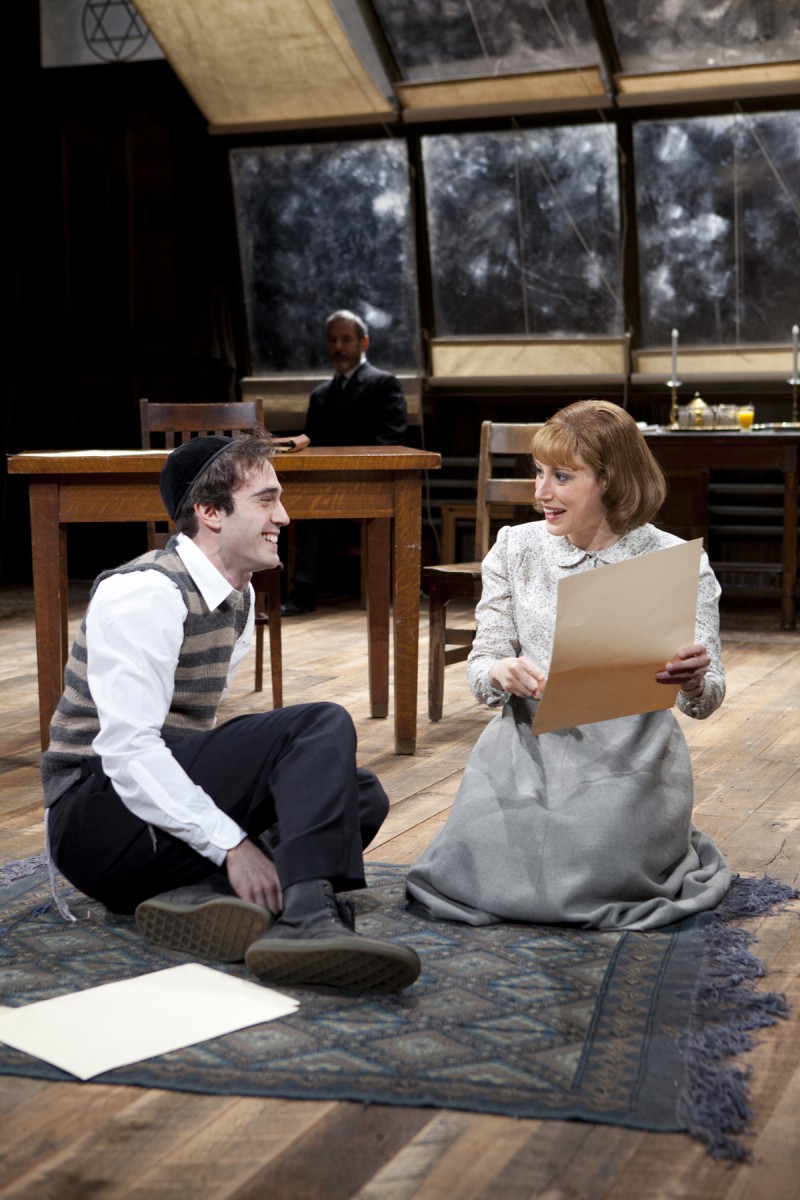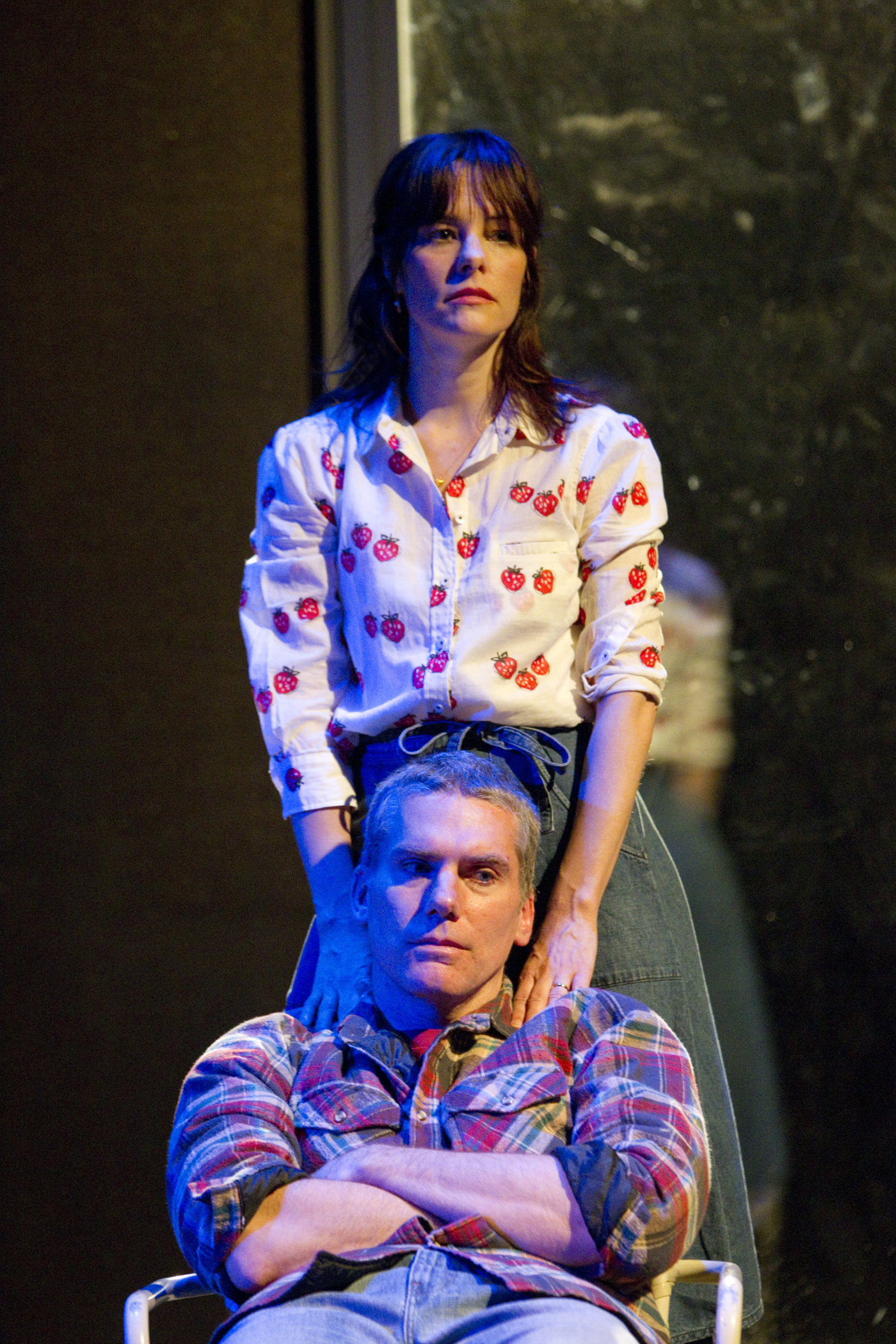Awano: You sometimes write stories about the act of writing itself. Could “Wood” be read as a story about writing?
Munro: That’s very interesting, and I don’t mind the idea at all. I don’t write that way, but…
Awano: But you read that way.
Munro: And I do write as if clearly ordinary events are tremendously important, because that’s the way they seem to me.
From “The Tremendous Importance of Ordinary Events: An Interview with Alice Munro about two versions of ‘Wood,’” by Lisa Dickler Awano, New Haven Review
*
[T]he triumph of my life is that none of the environments I found myself in prevailed over me.
-- Alice Munro, from Lives of Mothers and Daughters: Growing up with Alice Munro, by Sheila Munro
Alice Munro writes about the ordinary outsider—the unhappy housewife, the child born with a large purple birthmark on his face, the Alzheimer’s patient, the small town protagonist who can’t or won’t fit into the community’s narrow perceptions of normalcy—and examines how that character—who may never stop longing for societal approval—does and doesn’t challenge convention, does and doesn’t risk rejection by peers, does and doesn’t act on desires to live a larger life than the one society offers. Intriguingly, Munro's theme also applies to the lives of writers and the workings of the creative process, as an “outsider” mental experience that illuminates, deludes, cooperates and confounds, but which will never be reined in by the confines of practical, rational, repressive thought.
As a writer, Munro is known to be a tireless self-editor who will often continue to rewrite and revise her stories, even after they have been accepted for publication. “Wood,” which first appeared in The New Yorker in 1980, is a good example. After nearly thirty years, Munro returned to this story. The second version of “Wood” has been published in Too Much Happiness, Munro’s most recent collection of stories.
When the two versions are placed side by side, readers can see with what poetic precision Munro revised both large details, such as characterizations, themes and perspectives, and small ones—a rhythmic syllable here, a conjunction or punctuation mark there—as she shifted the point-of-view of the characters from middle-age to older, and heightened the story’s lyricism. Like many of Munro’s stories, “Wood” is set in “Munro Country,” the Huron County farmlands of southwestern Ontario—“Sowesto,” as the Canadian locale is popularly known—where the author came of age and has lived much of her life. While growing up in this practical-minded community, she played down her creative ambition so she would appear to fit in better with her peers. Even as an adult, the author has said, she has lived a double life—that of a writer on the one hand, and a working-for-a-living wife, mother and community member on the other. Similarly, she often writes a “double story” of sorts; shaping her universal literature from the overlooked lives of seemingly ordinary people, while all the while, directly or obliquely, writing about the process of writing fiction and the issues faced by writers as individuals and as members of society.
Munro’s literary protagonists don’t always appear to be engaged in literary work. They may be, for example, craftsmen like Roy, the protagonist of both versions of “Wood,” who is a happily married sign painter in the first version of the story, and an upholsterer and re-finisher of furniture in the second. Some of the protagonists in these stories are akin to her real-life father, Robert Laidlaw, who began writing when he was around seventy years old, after a lifetime of supporting his family through physical labor. Doppelgängers abound in Munro’s work, tying characters together across stories and collections, and when father and daughter characters appear together, they often appear to be doubles.
Laidlaw’s historical novel, The McGregors, which included descriptions of tree cutting, was published in 1979, three years after his death at age seventy-four. Although a lifelong reader, he suffered from “natural Laidlaw timidity,” (Munro, S., 105), and was torn between his creative individuality and his desire for acceptance from his rural community. He, like his daughter, described himself as having lived a double life. At fourteen, he dropped out of high school, and became a trapper and fisher in the bush, thereby avoiding his father’s more locally sanctioned path of farming.
To put Laidlaw’s choice in context, one might read Munro’s memoirish story, “Working for a Living,” in which she describes the trees in the bush as community outsiders, so to speak, relegated to fringes of farmland:
There was no more wild country in Huron County then (in the first quarter of the 20th century) than there is now. Perhaps there was less. The farms had been cleared in the period between 1830 and 1860, when the Huron Tract was being opened up, and they were cleared thoroughly. Many creeks had been dredged—the progressive thing to do was to straighten them out and make them run like tame canals between the fields. The early farmers hated the very sight of a tree and admired the look of open land. And the masculine approach to the land was managerial, dictatorial. Only women were allowed to care about landscape and not to think always of its subjugation and productivity. (“Working for a Living,” 130 )
Laidlaw later supported his wife and three children through fox and mink farming, and raised the animals in an intricate system of pens he designed and built behind the family home. Similarly, in “Wood:”
Roy’s workshop is in a shed behind the house. It is heated by a woodstove, and getting the fuel for the stove has led him to another interest, which is private but not secret. That is, everybody knows about it but nobody knows how much he thinks about it or how much it means to him. (Too Much Happiness, 226; slightly different in New Yorker, 46)
The trees Roy seeks out for cutting are those that logging firms have rejected as not being useful or beautiful. Roy looks for treetops left behind after logging, or trees targeted by the “forest management people” for removal, because they are “diseased or crooked or no good for lumber.” (TMH, 229; New Yorker, 46)
The physical setting in “Wood,” as in all of Munro's fiction, is psychologically revealing. Descriptions in her stories serve a narrative purpose; what may appear to be a gratuitous diversion in fact propels a complex plot in ways that readers may not at first consciously detect. Early in both versions of “Wood,” a long passage describes trees in the Sowesto bush: ironwood, cherry, apple, ash, maple, beech, and oak. At first glance, this cataloging may seem to contribute only atmosphere to the story. But as Roy reflects on the trees’ appearances—the maple trees, for example, “always look like the common necessary tree in the backyard,” and the oak trees, “always look like trees in storybooks,” with “intricate surface(s), and the devilish curling and curving of the branches” (TMH, 230; slightly different in New Yorker, 47)—and as he contemplates how they grow and behave and make him feel, they become stand-ins for members of his community. They remind us of characters we have met in Munro’s oeuvre who reappear in different manifestations from story to story, linking Munro’s works across the span of her sixty-year career. And the trees as characters demonstrate Munro’s structural use of metamorphosis to achieve narrative compression; how she may use a symbol to convey a variety of meanings in the space of one story; or—as exemplified by Munro’s depiction of Lea, in the second version of “Wood,”—how her characters turn sharp narrative corners that cause them to react and change, more than once in a story, to the point of personal transformation. Through such devices, Munro achieves, in short fiction, a range of events and a degree of character evolution that is novelistic in scope.
The creative protagonist in Munro’s stories, like the author herself and her father before her, leads a double life. Publicly, Munro’s protagonist tries to satisfy the expectations of his community, influenced by a Scots-Presbyterian ethos that prizes highly controlled—or “useful”—pursuits like farming, so as not to be ostracized for challenging cultural “rules” of his small town. This society scorns “fanciful” isolated interests, like wandering in the woods and harvesting wildlife or, by metaphoric extension, investigating the unrestrained, unconscious thoughts and feelings of human beings through the writing of fiction. And it frowns upon those who draw attention to their own achievements: “Who Do You Think You Are?” is the title of Munro’s story in which a teacher punishes a student for “showing off” her academic skills to her class and mildly challenging the instructor’s authority. Accordingly, the artist must be discreet about her pursuit of the solitary, self-centered goal of discovering a unique voice or an aesthetic sensibility to fulfill a personal potential that serves no one and nothing other than the artist’s own vision.
The relationship between creativity and solitude is a recurring Munrovian theme.
[I]n a way [Roy’s] thoughts about wood are too private—they are covetous and nearly obsessive. He has never been a greedy man in any other way …. Even what is worthless for his purposes will interest him …. He would like to get a map in his mind of every bush he sees, and though he might justify this by citing practical purposes, that wouldn’t be the whole truth. (TMH, 232; somewhat different in New Yorker, 48)
Munro’s daughter Sheila remembers that in the latter 1950’s, when the family moved into a home that reflected their upward mobility in West Vancouver, “[t]ucked away in the darkest corner of my parent’s dark bedroom [was] a small table with a typewriter on it. That is where my mother [wrote]” (Munro, S., 47).
In the second version of “Wood,” Roy and his wife Lea manifest seemingly opposite impulses toward independence and togetherness that suggest conflicting desires coexisting within many of us. Roy’s wife, who is initially a more outgoing person than he is in both versions, (in the second version she changes once she becomes ill), enjoys large family gatherings and working in a dentist’s office, where, in the second rendering of “Wood,” she is a “receptionist and bookkeeper” (TMH, 226). Munro loves word play, and as a “receptionist”—perhaps by metaphoric extension—Lea can be seen as a “receiver” of Roy’s and her community-members’ anecdotes or stories, as many members of Munro’s paternal family have been for generations. For example, Scottish ancestor, Margaret Hogg, (mother of James Hogg, who wrote Confessions of a Justified Sinner, and was an acquaintance of both Wordsworth and Byron), recited ballads she had learned from her father and others to Sir Walter Scott for inclusion in his Minstrelsy of the Scottish Border (Munro, S., 176).
Alice Munro herself has been a “bookkeeper” in various ways: always a writer, she has also been a librarian, and during her married-with-children years in Vancouver, she and her husband founded the still thriving “Munro’s” bookstore, where, her daughter Sheila tells us, “for the first time in her life, [Munro] could encounter the outside world with confidence...listen to people’s stories and then conveniently go home.” At the bookstore, Munro developed social ease, as her father had done in his mid-thirties, among fellow workers at a foundry, and Sheila says of them both: “It was a huge relief, a liberation, to find oneself socially acceptable after all, after years of seeking to avoid some imagined humiliation” (Munro, S., 189-190).
In both versions of “Wood,” the “quiet” Roy works alone (TMH, 225, 227; New Yorker, 46). In the later take on the story, he once thought he might teach his trade to his wife’s niece—and this is implied in the first version as well, in which Roy and his wife helped to raise the girl. But the niece has made different choices—and other choices have been made for her—and Roy enjoys solitude in his shed and in the forest. In the 1980 version he is a painter of signs – or perhaps metaphorically speaking, of symbols, or mysteries; “the only one in this part of the country, and he gets more business than he can handle” (New Yorker, 46). The signs that farmers ask him to paint for their gates represent fictionalized views of modern farm life—such as animals set against backdrops of rolling hills—when in fact the livestock are raised in tight enclosures devoid of sunlight.
In the 2009 version Roy is an upholsterer and re-finisher of “furniture”—the outlooks, artifacts, and memories that furnish the cultural history of his society. “He will also take on the job of rebuilding chairs and tables that have lost some rungs or a leg, or are otherwise in a dilapidated condition. There aren’t many people doing that kind of work anymore…” the intimate third-person narrator notes (TMH, 225), perhaps commenting on the current decline in fiction writing in our society, as well as our cultural propensity to worship youth and perfection, and reject or replace what is broken or imperfect.
Munro, the constant re-writer, reinterprets, as does Roy, the signs and mysteries of the first version of “Wood” from her later-life perspective, and she literally “refinishes” the first take on the story by writing a new ending. The author’s interest in re-imagining stories appears in various ways throughout her work. Across stories and story collections, there exist many connections between Munro’s characters. Situational templates, such as that of the protagonist who works alone in a shed behind the house, or that of a character who develops an all-consuming illness, reappear in ever-changing guises. In each variant, the protagonist makes different and surprising choices that lead to the twists and turns of plot that uniquely drive the narrative toward its equivocal ending.
This manner of “refinishing” stories also illustrates Munro’s fascination with questions of memory, and her observation that we constantly rewrite the stories of our lives, at different times and from different perspectives, whether retelling them to ourselves or others.
Home furnishings are a recurring motif in Munro’s work—she often describes the contents of a room by way of revealing character and furthering narrative while setting the scene—and one of the questions she examines in her story “Family Furnishings” is the moral price of writing fiction. This symbolism may have its source in Munro’s early years, during which her mother expressed her longing for beautiful things in part by trading fox furs for elegant furniture and fittings that the family couldn’t afford and didn’t value (Munro, S., 155). Often Munro will describe characters’ possessions in specific detail to illustrate their psychological and social pretensions, contrasting these social fronts with the complex, ungovernable issues and emotions that lie beneath the surface.
Munro has said that she aims to “get as close as [she] can” in her writing to “what [she] see[s] as reality—the shifting complex reality of human experience” (Thacker, 334). Whenever the protagonist or reader lands on what seems a conclusive point-of-view in a Munro story, it is soon challenged by an equal and opposite perspective. Characters confound their own, each other’s and the readers’ expectations, setting up psychological complications and narrative tensions that feel authentic.
Particularly in the 2009 version of the story, Roy and Lea’s marriage seems a close one, even though, in both versions of the story, Roy’s wife’s family has “limited interest” in him, for he’s a seemingly useless outsider: he isn’t a blood relative, he and his wife haven’t “contributed” birth children to the clan, and he “[isn’t] like themselves” (TMH, 227, New Yorker, 46). Yet in the second version, Roy and Lea “both [feel] that they [mean] more to each other, somehow, than couples who [are] overrun with children.” (TMH, 227).
Even so, in both versions of the story, Roy needs solitude, whether he works in his shed or in the wood. In the earlier version, when he finds himself in trouble in the bush—alone, injured and fighting for his life—his anxious, fragmented thoughts turn to his wife’s niece and to his wife herself, and he seems simultaneously struck by both his worry and love for his family, and by the general incomprehensibility and inexplicability of human relationships. He tells himself that “[n]obody knows what anybody else is thinking about or how anybody else is feeling …. Nobody knows how others see themselves,” and it seems unclear whether this is a wholeheartedly dismayed conviction about the limited ability of human beings to connect, or whether it is partly a rationalization that he uses to ease his fear and guilt about the possibility that he may not make it out of the wood and back home to continue to contribute to his family’s well being (New Yorker, 54).
In the second take on the story, in which Roy’s wife Lea develops depression, her illness seems to make it impossible for husband and wife to connect even when they are physically together. Before Roy has his life-endangering accident, he turns to the depressed Lea and tries to communicate his fears to her, but feels she isn’t “paying any real attention.” He thinks to himself that she’s “[m]issing the point. But isn’t that what wives do—and husbands probably the same—around fifty percent of the time?” (TMH, 237).
And yet, at the end of the second version, we discover that Lea—even under the lid of her depression—has understood Roy’s needs better than either he or she consciously realized. She surprises them both when she shows up in the wood to help save him when he needs her most. Roy, in turn, is then surprised once more—this time by his own uncomfortable mixture of emotions as he allows his wife to assist him.
In Munro’s stories, the trouble that characters get into is partly self-inflicted. In “Wood,” Roy’s first mistake is that he “thinks that there is very little danger in going tree cutting alone if you know what you are doing” (TMH, 230; New Yorker, 47). Roy’s view of nature as a predictable, humanly subduable force has no place in Munro’s Ontarian-Gothic world, in which 19th-century homesteaders were battered and scarred—physically and psychologically—by snowstorms and disease, and where “people can take a fit like the earth takes a fit” (“Fits,” 126 ). Roy’s underestimation—or denial—of the dangers of the earthly and the psychological wildernesses will threaten his life.
The expectations that protagonists and their fellow community members have for themselves and force upon one another loom large in Munro’s fiction, and the author charts her characters’ reactions when, for better or worse, an outcome takes them by surprise. One day, after the first snow, Roy is in the forest looking over some girdled trees that he has verbally agreed, with the farmer who owns them, to cut down. While there, he runs into Percy, a squatter, who has heard talk that this job has been promised to someone else, and that the lumber will go to the nearby River Inn, a hotel that caters to tourists and burns a “cord [of wood] a day…for show” (TMH, 234, 236; New Yorker, 49, 51). Roy and Percy imagine the dehumanizing, wasteful “big outfit” (TMH, 235) that may put Roy out of business. As ever, in both versions of “Wood,” Munro explores the impact of contemporary commerce on rural communities, and touches on her mystical, Wordsworth-influenced feeling about the natural countryside in which she grew up, which, she has told me in interviews, replaced religion for her in her girlhood. Also at a young age, Munro was inspired by Charlotte Brontë’s Wuthering Heights, with its unreliable narrator. Untrustworthy characters such as Percy, and folklorish characters, such as fairies, appear in various guises in Munro’s work, simultaneously attracting and repelling, or even horrifying the protagonist, leading him through delusion—or self-delusion—to sudden insight and revelation.
Major problems in Munro’s stories often result when a minor incident blows up into a serious matter. Vacillating between believing Percy and dismissing his story as embroidered rumor, Roy returns home, and over the course of the day he makes the second mistake that will put his life at risk: he underestimates his own value. A victim of his own lack of confidence, he allows his conversation with this gossip to overtake his imagination. Perhaps “Wood” here can be read as “Would”—as if Roy’s own self-doubt were holding him back from achieving his desired goal. Convinced, without any outside confirmation, that he isn’t the chosen one, that he has lost the job to some company with which he can’t compete, he rushes to the bush the next day to beat his competitor to the take.
A Munrovian character’s life can change suddenly in a geographical setting that mirrors the psychological action taking place. After parking his truck on the trail leading into the forest, Roy walks hurriedly toward the trees, muttering aloud to himself, imagining he is confronting his rival, and paying no heed to the lightly falling snow and the slippery leaves on the complex terrain underfoot. In his distracted condition, he contemplates the untamed bush. He remembers having recently read that the roughness of the wood’s floor dates back to just after the Ice Age, when “ice formed between layers of earth and pushed it up into odd humps….Where the land has not been cleared and worked the humps remain.” But emotionally unbalanced as he is, he makes no connection between this memory and his present danger; he can’t hear his own subconscious voice warning him about the uncanny, Gothic wilds that surround him physically and psychologically (TMH, 238-9; slightly different in New Yorker, 52).
What happens to Roy now is the most ordinary and yet the most unbelievable thing, something that might happen to a “daydreamer” or a tourist, but hardly to one so experienced in the bush: he “steps carelessly,” then skids in the snow, plunges through brush, and falls, breaking his ankle (TMH, 239; New Yorker, 52-3). He manages to hold his saw at a distance from his body as he goes down, but he hurts himself when he flings his ax away; its handle hits the knee of his twisted leg. Finding that he can’t walk or even stand up, “[h]e lets himself down as easily as he can and hauls himself around into the track of his bootprints, which are now filling with snow” (TMH, 240; slightly different in New Yorker, 53).
Roy has been crippling himself throughout the story; through his low self-image; through his insistence that nature is a controllable universe; through his deafness to his own intuition. Munro’s protagonists often have to feel their way through their difficulties before they can understand them rationally. Paradoxically, Roy’s shortcomings provide him with the complication that leads him to opportunity: forced to abandon his tools, and with heightened awareness of the dangers and mysteries of the bush, he begins to trust his wits, his instincts, and his imagination as he crawls through thickening snow, across the freezing forest floor and up a steep bank toward his truck (TMH, 240-1; New Yorker, 53-54). If he survives his humbling journey, perhaps reflecting on it later will guide him to a more complex, less self-deceptive appreciation of reality. In his metaphoric dimension as an artist, perhaps his experience will lead him to find his voice.
The tension between loyalty to family members and the desire to pursue individual fulfillment tugs at Munro’s protagonists as surely it has at the author herself in the course of her life. During her teenage years, Munro, already writing seriously, helped care for her mother, who suffered from Parkinson’s disease. Her ticket to college came in the form of a two-year scholarship, and when that ran out, she promptly married, and had children in the 1950’s, when she felt societal pressure to put aside her writing and focus exclusively on her domestic roles. Sheila Munro, the author’s eldest daughter, tells of her mother’s approach to writing while raising a young family in North Vancouver:
I think housework and writing have always coexisted for her in a kind of uneasy alliance, the one balancing the other….The room in which she wrote Lives of Girls and Women was a laundry room, and her typewriter was surrounded by a washer, a dryer, and an ironing board….I might find her reclining on the couch writing in one of her spiral notebooks when I came home from school, or scribbling away at the kitchen table when I came downstairs for breakfast. She’d always put the notebook away without skipping a beat, in the same way that Jane Austen put her embroidery frame over her writing whenever someone came into the room. You’d think she wasn’t doing anything more important than making up a grocery list. (Munro, S., 28-9)
Although her characters often seem burdened by their domestic responsibilities to others throughout Munro's fiction, at the same time, particularly in her collection Too Much Happiness, protagonists may find personal salvation through the chance to be useful to others in practical ways—especially if they can somehow save another human being’s life.
In “Working for a Living,” a character reminiscent of Munro’s father tells his daughter of a life-endangering experience he had while heading home in a blizzard from his night job. Caught in a snowdrift, unable at first to move his legs, he saved himself by recalling his family members—the young, the old, the sick—as well as the financial debt he would leave behind if he died; and these thoughts gave him strength to survive:
…[H]e pulled one leg out of the snow, and then the other: he got out of that drift and then there were no more drifts quite so deep, and before long he was in the shelter of the windbreak of pine trees that he himself had planted the year that [his daughter] was born. He got home.
His daughter muses, “[D]idn’t he think of himself…didn’t he struggle for his own self?.... Was his life now something only other people had a use for?” (“Working for a Living,” 165-166).
In the first version of “Wood,” Roy worries about and financially assists his wife’s niece, whom the couple raised for nine years. Now grown, she has five children and an unsteadily employed husband, a truck driver, whom Roy and his wife “didn’t even know she knew,” until she “quit” school to marry him (New Yorker, 48). In the second rendering of the story, when his wife slips into depression, Roy is “patient with this grave, listless woman who sometimes waves her hand in front of her face as if she is bothered by cobwebs or has got stuck in a nest of brambles” (TMH, 228).
Later, in both takes on the story, following his initial shock after falling and injuring himself in the bush, Roy turns to thoughts of his family members and his concern for their welfare seems to fortify him. In the second version of “Wood:”
For some reason he thinks of [his wife’s niece], in her unbecoming red ski jacket and decides that her life is her life, there is not much use worrying about it. And he thinks of his wife, pretending to laugh at the television. Her quietness. At least she’s fed and warm, she isn’t some refugee shuffling along the roads. Worse things happen, he thinks. Worse things.
He starts up the bank….He keeps going; he grits his teeth as if that will keep him from sliding back; he grabs at any exposed root or halfway-sturdy stem that he can see. (TMH, 241-2)
Also in the second version of “Wood,” it is Lea’s desire to find and protect Roy at the story’s end that lifts her out of her debilitating depression and enables her to drive into the bush in a truck, which, to the best of Roy’s knowledge, she has never before driven. In fact, she stopped driving entirely after her illness began—but now she feels “driven” to support her husband physically and emotionally (TMH, 243).
It was only a few years after her father’s death, at forty-nine, that Alice Munro published her first version of “Wood” in The New Yorker. The second version appeared, in Too Much Happiness, two years before her eightieth birthday. The writer of the first is well into middle age; the writer of the second is old—and the protagonist’s thoughts about his own mortality have changed accordingly.
Near the end of the first version of the story, once he believes he will survive his ordeal, Roy realizes that Percy has been mistaken about the identity of the winner of the contract, whom he had vaguely remembered as being a carpenter, or a painter, or a paperhanger (New Yorker, 49). “The truth is that the paperhanger, the decorator, the housepainter doesn’t exist….It is Roy himself. Not a housepainter—a sign painter” (New Yorker, 54). With this, it seems that Roy is able to acknowledge to himself that in addition to being a practical man, he is an artist. As it turns out, the rumor that undermined Roy’s confidence was just a story within the larger story of “Wood”—and an example of how Munro uses both shifting points-of-view and story structure to explore her questioning of the nature of reality. Reassured on this point, Roy’s “selective” memory “manages to turn everything to good account;” turning the “foolishness of the accident” into the “triumph” of a “successful crawl” toward the truck (New Yorker, 54). Roy convinces himself that he is finally “safe”—which is the last word in the first version of the story and an ironic promise that evil lurks in the midst of familiar, day-to-day existence. The story ends with Roy still far from secure, yet, in middle age, perhaps he can still convince himself that he will be able to control his destiny.
In this earlier “Wood,” Roy’s wife, here named Lila, is a supporting character, who comes into her own in the 2009 version of the story, which explores the ways people do or don’t go on with their lives when they have lost the person or the situation they thought they couldn’t live without. Roy’s wife is described as an “easygoing,” capable, sociable woman in both versions of the story (TMH, 226-7; New Yorker, 46). But in the second take on the story, a winter’s “almost steady flu and bronchitis” leave her, now named Lea, exhausted, nervous, apathetic, and asocial (TMH, 228). A doctor gives her pills, her sister takes her for an expensive consultation with a holistic medicine practitioner, and her niece takes her to a reflexologist for treatment. Yet nothing pulls Lea out of her slump.
Lea’s experience may have a biographical precedent in Munro’s life. When the author was nearing thirty, at the end of the 1950’s, she felt overwhelmed by trying to juggle her familial roles with her writing. She was still receiving rejections of her stories and felt commercial pressure to write a novel, which went against her creative instincts. Munro told her daughter, “I didn’t feel anything good was coming from me. I felt my own gift hadn’t developed and maybe wouldn’t.” Finding it increasingly hard either to write or do housework, Munro spent much of the day “in a morose state of inactivity,” until she stopped writing altogether, developed an ulcer and panic attacks, and was prescribed tranquilizers (Munro, S., 86-88).
Munro’s daughter Sheila believes her mother was being silenced by the “censoring” expectations of women writers; that she had to learn to resist the pressure to “tell the nice, conventional, moral story and, in its place, how to tell the truth of her experience as a woman” (Munro, S., 90). When, in the early 1960’s, Munro discovered how to use her personal material to achieve this aim, she broke through her writer’s block.
At the climax of both versions of “Wood,” as Roy wonders whether he will survive or die alone in the wood, a “large bird rises out of the bush.” The “sign painter” of the first version, and the “upholsterer and refinisher of furniture” of the second, “thinks it’s a hawk, but it could be a buzzard.” In the 1980 version he thinks, “[i]f it’s a buzzard, it will have its eye on him, but he’ll have it fooled” (New Yorker, 54). Then he becomes distracted, and never returns to this question. In the 2009 version, Roy manages no such self-delusion. He wonders:
If it’s a buzzard will it have its eye on him, thinking it’s in luck now, seeing he’s hurt?
He waits to see it circle back, so he can tell what it is by the manner of its flight and its wings….[I]t is a buzzard. (TMH, 243)
Roy knows that loss and even death may be close at hand—but with this truth comes compensation and solace. When, in the later version, he finally reaches level ground and can see his truck ahead, he sees Lea at the wheel. She seems, when she greets him, restored to her old self. Or perhaps she has become a new version of herself—unaware that she has gone through a period of depressive change, or that she stopped driving her car during her illness, or that, to Roy’s knowledge, she has never driven the truck. As she skillfully maneuvers the truck into the turnaround, Roy senses “(s)ome loss fogging up this gain” of his wife’s vitality” (TMH, 245). Feeling somewhat overcome by a “warm wooziness,” (TMH, 246) he looks at the bush with new eyes, as an injured passenger seated next to a fully functioning driver. He notices:
[h]ow tangled up in itself [the wood] is, how dense and secret. It’s not a matter of one tree after another, it’s all the trees together, aiding and abetting one another and weaving into one thing. A transformation, behind your back. (TMH, 246)
He tries to remember another name for the wood, but the precise word eludes him. Again we see Munro working with an issue of memory: the complex interplay between a biological phenomenon, such as a “senior moment,” and our unconscious desires—some psychological reason that we may wish to forget something.
Finally, the literary-sounding word that Roy has been searching for comes to him at the end of the second version of Munro’s story:
Forest. That’s the word. Not a strange word at all but one he has possibly never used. A formality about it that he would usually back away from.
“The Deserted Forest,” he says, as if that put the cap on something (TMH, 246).
Roy speaks as if he were putting the title on his own story. Is the “forest” here Roy’s psyche? If so, what has abandoned Roy’s mind? His control over his own body, for one thing. Will his creative inspiration and solitary ambition be diminished in the wake of this desertion? And if so, is it possible he has “deserted” it and that he may be relieved to put it behind him?
In both versions of “Wood,” Roy is reduced to crawling along the forest floor, unsure about whether he will escape the wood alive. In the first version of the story, we can believe that Roy may make it out of the wood alone. In the second version, Lea’s rescue of Roy suggests that he needs help now. Does this reaffirm, in spite of his losses, that the newly significant connection between Roy and Lea is more positive than not? It seems we are left—as we are so often in Munro’s fiction—on a note of ambivalence and uncertainty.
Ambiguity is a hallmark of Munro’s endings; she has told me in an interview that she writes because “[she wants] to get a feeling of mystery or surprise. Not a mystery that finishes [the reader] off, but something that makes the character or reader wonder” (VQR 2006). At the end of a Munro story, readers are aware that things could turn out in a variety of ways for the characters.
Munro has often said, after publishing a new collection of stories—especially in recent years—that she won’t write another; that she has used up her material; that she would like to lead a more manageable life. Fortunately for her readers, her 14th book is due out in the fall of 2012.
Lisa Dickler Awano has interviewed and profiled Alice Munro for The Virginia Quarterly Review and Vancouver Sun and been interviewed about Munro's work on national radio. Other work has aired on NPR's Morning Edition and All Things Considered and appeared in The New York Quarterly and Chicago Review. Awano also organizes readings at The National Arts Club in New York City.
The 2009 version of "Wood," reprinted in The New Haven Review, and the full texts of Awano's interviews with Munro in NHR and in The Virginia Quarterly Review can be found by clicking the links below.
--0--
Bibliography
Awano, Lisa Dickler. “Alice Munro’s Too Much Happiness,” Virginia Quarterly Review, October 22, 2010. Book review . http://www.vqronline.org/blog/2010/10/22/alice-munros-too-much-happiness/
Awano, Lisa Dickler, ed. “Appreciations of Alice Munro,” Virginia Quarterly Review, Summer 2006, p. 91-107. Interviews with certain of Munro's peers, among them Margaret Atwood, Russell Banks, Michael Cunningham, and others, presented as first-person essays. http://www.vqronline.org/articles/2006/summer/awano-munro/
Awano, Lisa Dickler. “An Interview with Alice Munro,” Virginia Quarterly Review, Summer 2006. Interview about The View from Castle Rock and the craft of writing. http://www.vqronline.org/webexclusive/2006/06/11/awano-interview-munro/
Awano, Lisa Dickler. “An Interview with Alice Munro,” Virginia Quarterly Review, October 22, 2010. Interview about Too Much Happiness, and the craft of writing. http://www.vqronline.org/blog/2010/10/22/an-interview-with-alice-munro/
Awano, Lisa Dickler. “The Tremendous Importance of Ordinary Events: An Interview with Alice Munro about two versions of “Wood,” New Haven Review Issue 009 (Winter 2011), p. 46-67. http://www.newhavenreview.com/wp-content/uploads/2012/01/NHR-9-Awano.pdf
Munro, Alice. “Fits,” The Progress of Love. Vintage, 1985-6.
Munro, Alice. “Wood,” 2009 version, reprinted in New Haven Review Issue 009 (Winter 2011), 68-89. http://www.newhavenreview.com/wp-content/uploads/2012/01/NHR-9-Munro.pdf
Munro, Alice. “Wood,” The New Yorker, November 24, 1980, 46-54.
Munro, Alice. “Wood,” Too Much Happiness. Knopf, 2009, 225-246.
Munro, Alice. “Working for a Living,” The View from Castle Rock. Knopf, 2006.
Munro, Sheila. Lives of Mothers and Daughters: Growing Up with Alice Munro. A Douglas Gibson Book. McClelland and Stewart Ltd., 2001.
Thacker, Robert. Alice Munro: Writing Her Lives: A Biography. A Douglas Gibson Book. McClelland and Stewart Ltd., 2005.
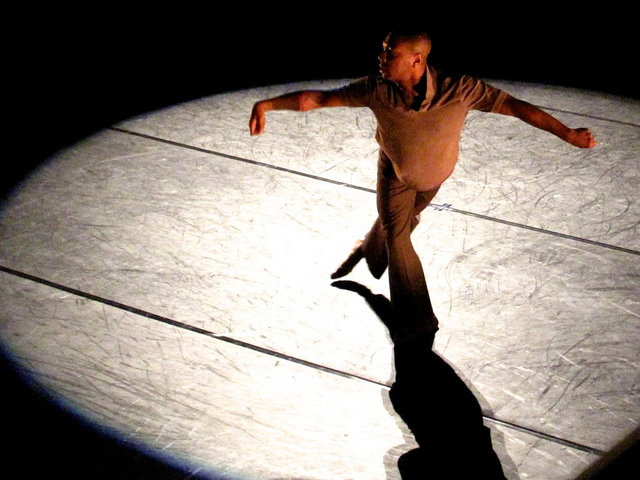 ARTS & IDEAS: Choreographer Kyle Abraham ran an errand up to Massachusetts before arriving in New Haven. He had to collect a check for $25,000, part of an annual award given by the renowned Jacob's Pillow Dance Festival in the Berkshires of Western Mass. The prize is one of the biggest in the perennially cash-strapped world of dance, and past recipients are among the giants of the art form, including Merce Cunningham, Bill T. Jones and Crystal Pite.
ARTS & IDEAS: Choreographer Kyle Abraham ran an errand up to Massachusetts before arriving in New Haven. He had to collect a check for $25,000, part of an annual award given by the renowned Jacob's Pillow Dance Festival in the Berkshires of Western Mass. The prize is one of the biggest in the perennially cash-strapped world of dance, and past recipients are among the giants of the art form, including Merce Cunningham, Bill T. Jones and Crystal Pite.
